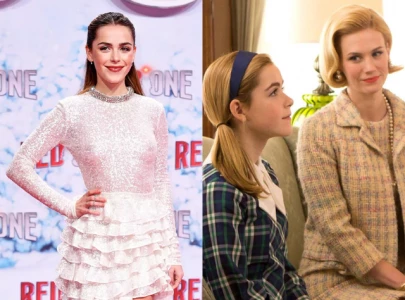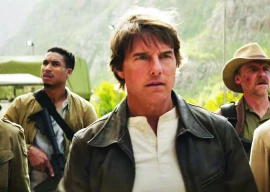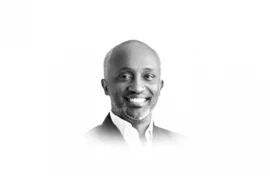
The fabric itches as you face the camera for what will become one of your life’s most defining images. You pray that you can just get through this one night without suffering permanent retinal damage from the bright white flash of the photographer’s hulking camera. You dread the moment when the photographer will ask you to pose with your spouse in front of a soaring backdrop of the Taj Mahal, holding an aging bouquet of red roses. You cringe.
Until recently, this is the reality most couples had to face on their wedding day if they weren’t willing to dish out enough cash to hire the best fashion photographers in Pakistan to take their portraits. Photo studios across Pakistan would sell bridal packages that included videos and photographs of the reception, mehndi and what-not, as well as a more formal bridal photo shoot that took place in a makeshift studio at the bride’s house.
The downside of this arrangement was that the photographs ended up looking stiff and unnatural. At the actual events, too, the two or three cameramen on hand would usually manage to get underfoot, annoying both the guests and their hosts by looping endless metres of cable around the venue.
Thankfully, a new breed of photographers are making their mark on the wedding circuit, giving prospective brides and grooms the option of moving beyond the predictable shaadi shoot. Armed with handy digital SLR (single lens-reflex) cameras, these young, energetic photo-fanatics are out to take a different kind of picture of the most important day of your life.
Identifying a gap in the market
Zeeshan Haider graduated from the Indus Valley School of Arts and Architecture (IVSAA) in 2008 with a minor in photography and soon began offering his services to couples who wanted a fresh take on their big day.
“People’s taste is improving, which means bridal photography is changing. I have a lot of respect for the people who have been filling the niche for so many years, but now people want something different. Now bridal photography is all about telling a story, which is what I do,” says Haider.
One of the first weddings that Haider covered was Mariam Maqsood’s brother’s wedding in December 2008. “Zeeshan was two years ahead of me at IVSAA and I had seen his work and liked it. The pictures he took of my brother’s wedding were natural, the colours were lovely and he really captured the mood of each event. If he took a picture of people dancing, you could really get a sense of happiness they were feeling,” says Maqsood.
Kohi Marri is another popular name these days, and like Haider, he started off by building on a passion for photography. “I became more obsessed with photography over time and surprisingly, people liked what I did. I don’t mind trying anything at least once, to see if I’m any good at it, so when a friend asked me to cover her wedding I jumped in head first and the next thing I knew, my phone wouldn’t stop ringing,” he says.
Explaining why people have started looking for more option on their wedding days, Marri says: “People are sick of intrusive, loud, and obnoxious photographers who shout at people, telling them what to do and where to stand. I believe everything has to be an organic part of the event and I try to work in harmony with the crowd’s state of mind.”
All of Madiha Imran’s wedding events were covered by Marri in 2008. “I hadn’t heard about Kohi back then but he was highly recommended by someone whose daughter’s wedding he had shot. I liked his work and I liked that he was so relaxed. The pictures turned out nicely, the colours were great and Kohi was very accommodating.”
While Marri and Haider mostly operate alone, Kashif Rashid has managed to make the transition from lone photographer to studio owner. A graduate from the Institute of Business Administration in Karachi, Rashid ventured into photography in October 2008. Rashid initially worked in the corporate sector and soon realised it wasn’t for him. He started event photography last June, and set up his photo studio, K bridals, shortly after.
Initially, K Bridals depended on word of mouth to get exposure. But even then, Rashid felt there was a gap in the market that he could fill. “I think traditional bridal photography and event coverage bores people now. We offer couples something different. We got rid of the fake background because we don’t believe in super imposed backgrounds- they just look bad.”
Rashid does concede that not everyone has caught onto the trend just yet, though: “It’s mostly the younger couples who want a fresh, new look to their pictures. They have to get a few posed, traditional-looking shots taken to please older family members who aren’t used to this sort of thing. On the whole, I would say that sixty to seventy per cent of the pictures I take are candid, and the rest are more formal.”
The learning curve: using unique techniques to set them apart
All these young photographers display an admirably firm grasp of their craft. “I specifically work with one light source and use a lot of contrast in my pictures. Monochromatic images are always in, and black and white pictures are really appreciated,” says Haider. When asked how people have responded to his technique, he says: “The people whose events I have covered have been amazing. We discuss the concept beforehand and the response has been good.”
His client’s responses have been similarly positive, as Maqsood acknowledges that she was generally happy with her bridal portraits. “I wish he had done more event photography, though,” she concedes. “But his technique was great, he made everyone feel very comfortable and managed to capture the essence of the event,” says Maqsood.
Rashid at K bridals says he uses innovative sets to add warmth and humour to his bridal portraits. One of his clients, who asked not to be named, said she was pleasantly surprised when he played music in the background during her bridal photo shoot to put the couple at ease.
She did have some reservations, however, saying that she suffered some technical glitches. “Rashid at K Bridals did a great job with my wedding photographs, but the valima pictures weren’t as good as they could have been. At the time, though, I suppose K Bridals was still learning the ropes of the business, because there were some issues with the equipment, and with the lighting.”
Rashid himself is quick to point out that new entrants to the field have to be careful with the technicalities. “You must always have the latest equipment and backups of everything,” he cautions. “It can get pretty stressful.”
Meeting challenges head-on
Haider usually doesn’t have help at hand when he covers a wedding, though he insists this isn’t a problem. “I just carry a huge bag and that contains everything. My biggest problem is that a shoot can become like a social event. It’s better when you don’t know the people you shoot because I like to run around trying to get my shots. I believe you have to camouflage yourself to get the perfect shot.”
According to Haider, dealing with clients can sometimes be tricky, especially if they ask for more pictures than he can provide. “Another issue is that I don’t really airbrush too much but some people want to look like models, and I can’t say no directly -so that has to be worked out,” he says.
Marri, on the other hand, says time is his biggest constraint. “I prefer analysing pictures and putting together a collection that will tell a story. That takes weeks, and with a heavy schedule I don’t get much time to put a lot of energy into that part of the process.”
On his part, Rashid says he has yet to meet a true ‘Bridezilla’ though he has heard they exist. Barring that, Rashid says he enjoys the social aspects of the job. “When I started out, people told me I would be treated like a ‘photographer’- but actually, people have treated me really well, almost like a member of the family,” he says.
Price Matters
The advantage of having younger freelance photographers taking photographs at a wedding is that they aren’t quite as expensive as more well-known names.
K Bridals offers a variety of different packages to couples: event coverage can range from Rs 9,000 to Rs 30,000 and portraits and bridal shoots can range from Rs 25,000 to Rs 45,000. One of Rashid’s clients said she was generally happy with the price she paid for her bridal shoot: “Obviously, one of the reasons we chose K Bridals was that they were relatively less expensive than Munna Mushtaq or even Kohi Marri. We had to take that into account,” she says.
Haider says that his prices vary, but he could charge around Rs30,000 to Rs 45,000 a night and Rs 25,000 to Rs 30,000 portraits.
“Weddings can be very lucrative, with a big margin, but not every time – my biggest expenses are prints and camera maintenance. Photography is the second most expensive profession in the world, and if you’re not updated constantly it won’t work out for you. Photographers are almost always broke and living hand to mouth,” says Haider.
Rashid had a similar opinion, warning that photography required a lot of investment. “But it is fairly lucrative,” he added. “I do this fulltime now.”
So you want to be a photographer?
Advice from the experts:
Kashif Rashid: “Technology has really helped me- if you have a decent SLR camera anyone can take a good picture. But be warned - you’re constantly dealing with the most important day of someone’s life. You can’t screw up, and you have to make sure you have all your bases covered.”
Zeeshan Haider: “Make sure you get a feel of the event and then shoot accordingly. If the family is not too open to new ideas then your pictures will be kind of standard, they’ll be according to a stencil. You have to make it feel like you were really there. What I do differently is that I capture the small moments of a wedding. Arguments, expressions... some people love it.”
Kohi Marri: “I personally don’t pay attention to trends. I focus on keeping my work contemporary and relevant and whenever someone pegs me into a trend it doesn’t work.”
Published in The Express Tribune, December 12th, 2010.

1731476617-0/Sandra-Oh-(2)1731476617-0-165x106.webp)















COMMENTS (1)
Comments are moderated and generally will be posted if they are on-topic and not abusive.
For more information, please see our Comments FAQ